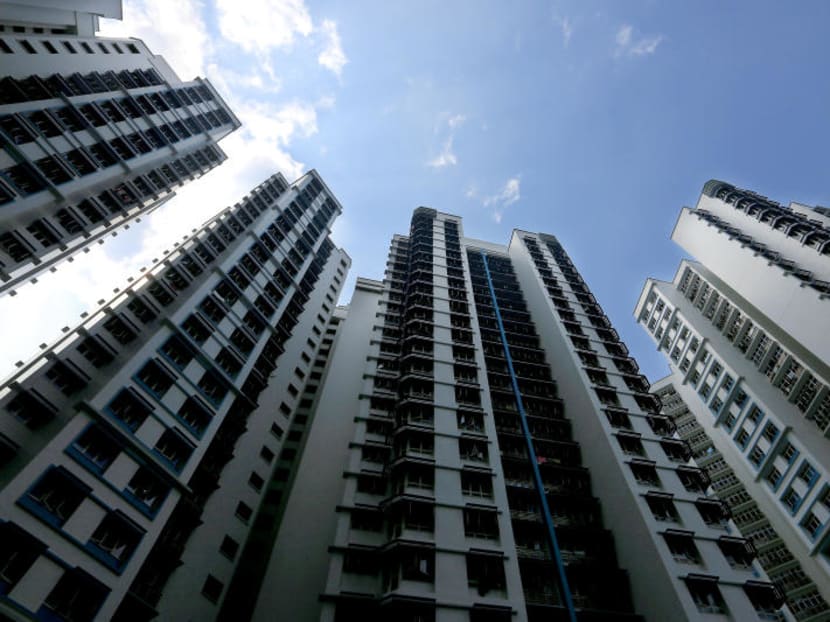Keeping tabs on the rising cost of loans
With interest rates having risen substantially and likely to continue going up, many homeowners are paying more for their mortgages. It is thus a good time to look for lower rates before costs rise even further.

Along with carefully selecting where they want to live, most people also look for a mortgage that fits their needs and allows them to buy the home they want.
With interest rates having risen substantially and likely to continue going up, many homeowners are paying more for their mortgages. It is thus a good time to look for lower rates before costs rise even further.
A mortgage loan is one of the biggest and most important financial transactions most people ever make. Along with carefully selecting where they want to live, most people also look for a mortgage that fits their needs and allows them to buy the home they want.
Even if they chose the right loan when they bought their home, homeowners have been hit by higher costs over the past several years as interest rates have increased.
The reason is that most interest rates here are now tied to the three-month Singapore Interbank Offered Rate (Sibor), a daily reference rate based on the interest rate at which banks borrow from one another, or another floating rate.
Even though some loans are advertised as “fixed rate”, that fixed rate usually lasts only for the first two or three years and then rises or falls in line with Sibor thereafter.
Some consumers have also chosen “floating rate” loans with rates that float from the beginning, with the incentive often being a lower interest rate initially.
The three-month Sibor has risen from 0.45 per cent in January 2015 and 0.99 per cent a year ago to 1.50 per cent in early May, DBS Bank reported. United Overseas Bank (UOB) expects the rate to go even higher, to about 1.7 per cent by June and 1.85 per cent at the end of the year.
It could climb further due to continuing increases in rates by the Federal Reserve Board in the United States, and other factors.
Those increases have made many mortgages more expensive. The monthly payment for a S$500,000, 25-year, floating-rate loan would have risen by about S$120 per month over the past year alone, for instance.
Refinancing can save money but shop carefully
If the rate on your mortgage has risen, you can often save money by refinancing your loan at a better rate and fixing the interest rate for three years.
One of the easiest ways is to use a comparison website. ValuePenguin and GoBear, for instance, recently showed loans with fixed rates as low as 1.60 per cent for two years or 1.62 per cent for three years.
Those rates can vary depending on factors including the amount of the loan, your credit score, and the location of your home.
If you decide to look for a new loan, it is important to shop carefully. Perhaps the most important thing to look for is whether you’re eligible to take out a new loan and how much it would cost to switch.
Some banks lock borrowers in for up to five years, for instance, or charge prepayment penalties of 1.5 per cent.
Before looking for another loan, check to see whether you’re allowed to pay off the current loan and what it will cost.
If you can’t refinance or costs are too high, it may not be worth looking around.
If you are eligible for refinancing, the interest rate is the key factor for most borrowers.
Beyond that basic consideration, look at both the promotional rate and the long-term rate, whether the basis for a floating rate is Sibor or a board rate, and how much the bank will mark up your loan above the Sibor.
Before you apply for a loan, check how long you will be locked into the loan without being able to pay it back and whether there is a prepayment penalty.
Look, too, at the closing costs, which are additional fees charged by the lender and other parties involved in finalising the loan, such as valuation or legal fees.
Ask about special benefits from banks
Apart from the interest rates and fees, you can look for special features at some banks. Standard Chartered Bank offsets interest on your home loan with interest from your deposits, for instance, while having a home loan at DBS Bank can help you earn a higher interest rate on your deposits.
And since interest rates are expected to rise, many borrowers will want to lock in a fixed rate for at least two or three years.
You might also consider a longer loan if you want to reduce your monthly payment, albeit at the cost of having to paying for a longer time and paying more interest.
Whereas the monthly repayment on a 20-year, S$500,000 loan at 1.65 per cent is about S$2,447, for instance, the monthly payment for a 30-year loan could be just about S$1,761.
For many homeowners, it is easy to get complacent and keep a mortgage from the same bank even when rates rise. However, looking around at other banks and locking in a lower rate for several years could save you plenty of money.
And whether you refinance at this time or not, it is prudent to keep checking interest rates regularly and consider refinancing in the future if you can save by shifting your loan to another bank.






